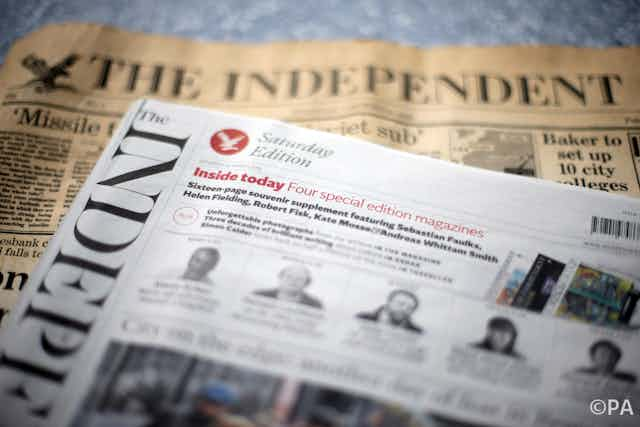A strong investigative front-page story alleging that a UK-based Saudi dissident was connected with a plot to kill a Saudi king allowed the last print edition of The Independent to exit with the panache and impact with which it arrived some 30 years ago.
Also making the final front page a memorable one was the strong photographic image of Brussels commuters beating a hasty retreat from an anti-terror operation at a tram station. This caught the dour mood of a week dominated by terror. And while other papers went with a picture of a wounded terror suspect at the scene, The Independent’s choice reflected its overarching concern about the impact of world events on ordinary people.

The final edition gathered a number of good exclusives of significant public interest and, as usual, the preceding day’s news was well covered. Jeremy Corbyn’s speech at the teacher’s conference got a good show, if accompanied by a rather doomy piece of political speculation from the paper’s deputy political editor, Nigel Morris, that a “poor election showing could see Labour revolt”.
The Independent’s non-dogmatic approach to opinion was always what made it vital and distinct. Unlike its rivals you never knew quite what position it was about to adopt – but it was usually well thought through and often challenging. The paper was much more accepting of the Corbyn phenomenon, for example, than the Guardian, which has run with a misguided and patronising campaign by its commentariat. The Indy, always better “on the street”, caught the Corbyn zeitgeist.
I must admit that I did momentarily check to see whether it was April 1 for the headline of the two-page interview with Alastair Campbell, who said he found it “very difficult not to tell the truth”. It was an odd choice for a last “big interview” given Campbell’s continued refusal to accept the sheer scale of the Blair years’ catastrophe. But perhaps that is the point. Campbell does say that Blair should not have made The Independent the emblem of his “feral beasts” speech “because the real drivers of it were Murdoch and Dacre. And he should have said that.”
My composure is restored with Patrick Cockburn’s disturbing account of what is going on in Baghdad. Cockburn is one of the greatest British foreign correspondents of all time – a must-read. He will fortunately remain with the new internet-only Independent. On page three, founding editor Andreas Whittam Smith summed up pithily The Independent print edition’s fatal problem: “The technology that enabled us to establish ourselves has, 30 years later, rendered the printed edition unviable.”
Thing of beauty
Leafing through the paper I was struck by what the internet generation is losing by the print edition’s demise. The founders decreed a paper that would be aesthetically outstanding and so it was with the last edition: an artefact of beauty, elegantly and cleanly laid out, with strong photographs and wonderful typography.
Coming from a pre-internet generation that was brought up on Eric Gill’s typography, I do wonder if the current generation will ever have the opportunity to understand the sheer beauty of type design and its intimate relationship with a page of white paper.

My own relationship with The Independent began with a phone call from then editor Simon Kelner in the summer of 1998 inviting me to join the paper as an investigative journalist. As a Sunday newspaper journalist and TV producer it was a baptism of fire working for a daily. On the first day I had to write a hasty 1,000 words in an hour, but I did. For three years I produced investigations and more. It was a tough gig, but we punched above our weight, as Rottweilers rather than lapdogs, biting the arses of the corrupt and complacent.
In 2001, I resigned to move out of London with my family. But several months later, I was called in to help the Independent on Sunday by the then deputy editor Michael Williams in the wake of 9/11. I wrote hundreds of stories in my time working for both papers. My arrangement with the cash-strapped Sunday edition lasted until 2007 when I concluded that I would probably earn more delivering the paper than writing for it. I also wanted to concentrate on my developing academic career.
Grown-up journalism
It wasn’t all sweetness and light working on the Independent papers. The paper did have its weaknesses other than money. In my time they did not have the visionary leadership, intellectual or public profile that Alan Rusbridger brought to the Guardian. You rarely heard an Independent editor on the broadcast news or anywhere really until very recently. Appointments seemed sometimes made on the grounds of family or social connections much to the frustration of better-qualified staff.

The Independent treated its readers with respect. It assumed that they were intelligent, grown up and could be swayed by reasoned discussion and argument. This was in contrast to its competitors, who so often plain pander to their reader’s worst prejudices. The Independent’s readers wanted something that was exactly that – independent – and let’s hope the website version can keep up the tradition. At this moment in time, a sense of history, tolerance and proportionality is need more than ever – and is sadly lacking in much of the surviving press.

